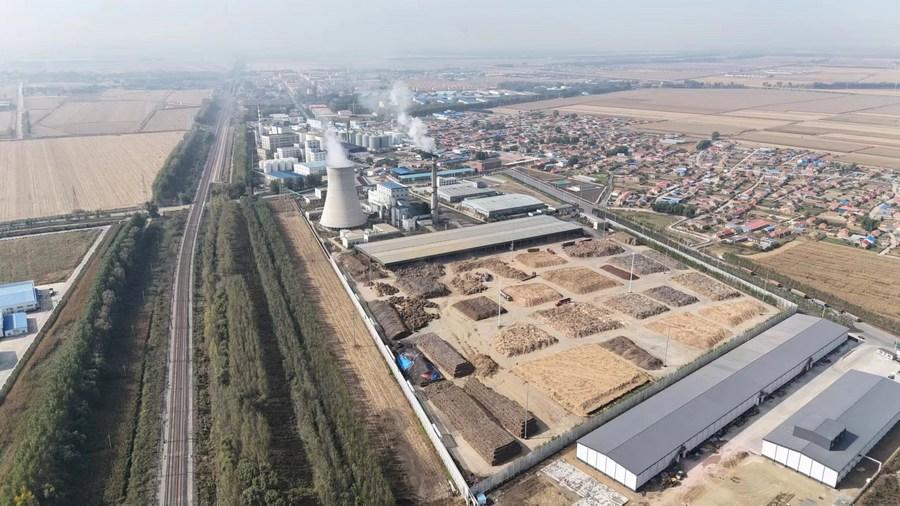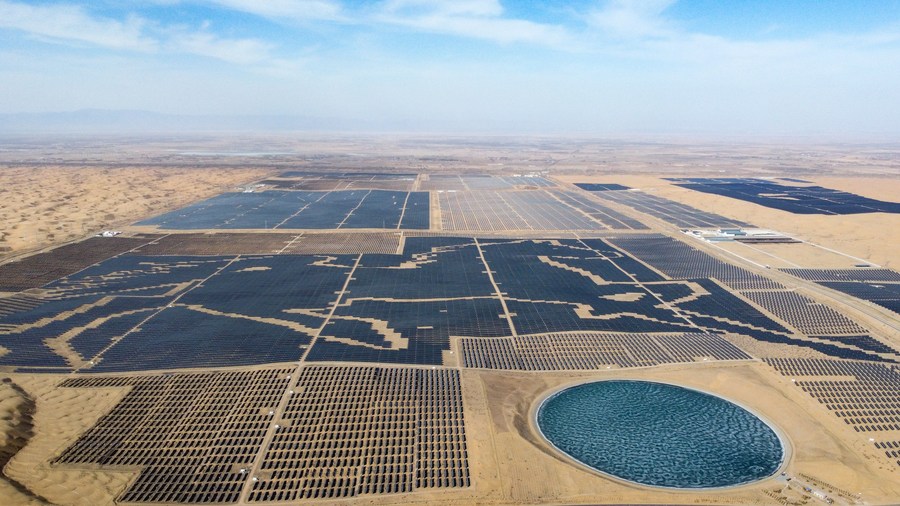
This aerial photo taken in October 2023 shows corn stalks being dried at an energy company in Tieling County, northeast China's Liaoning Province. (Xinhua)
While the temperature plummets to minus 25 degrees Celsius in Tieling County, northeast China's Liaoning Province, truck drivers brave the harsh cold, waiting in a long queue outside an energy company. Their vehicles are fully loaded with corn stalks.
Instead of being discarded or burnt, those corn stalks, along with other agricultural and forestry waste, will be used as heating fuel, replacing traditional coal, in the biomass combined heat and power plant.
The company is designed to process about 350,000 tonnes of agricultural and forestry residues annually, replacing approximately 112,000 tonnes of standard coal, according to Qi Dengli, general manager of the company.
Apart from electricity generation, the plant can also provide heating for an area of about 750,000 square meters in the surrounding villages of the county's Xintaizi Town, Qi added.
Tieling is a major producer of corn. In the past, the corn stalks were usually burned directly by farmers after the autumn harvest, resulting in environmental pollution and resource wastage, recalled Zhao Yuguo, a local grain farmer.
"However, the stalks have now become treasures, and people package them and supply them to local power and heating plants," Zhao said. People can earn over 10 yuan (about 1.41 U.S. dollars) per mu (about 0.07 hectares) from corn stalks.
Utilizing stalks for heating also brings about economic advantages for local plants, saving around 7 yuan per square meter compared to traditional coal heating methods.
The province piloted stalk packaging and burning for heating in 2015 and now utilizes over 600,000 tonnes of corn stalks for heating annually, according to the provincial agriculture and rural affairs department, adding that the volume is still increasing.
In the city of Longkou, east China's Shandong Province, more than 10,000 villagers have benefited from a natural gas heating project.
Wang Desheng, a 65-year-old farmer, said that he doesn't have to clean ash or light the fire in the boiler early in the morning anymore since he started to use the convenient and cost-effective natural gas heating. "I can even adjust the temperature."

This aerial photo shows a view of the photovoltaic power base in north China's Inner Mongolia Autonomous Region. (Xinhua/Bei He)
North China's Inner Mongolia Autonomous Region has 57 percent of the country's wind energy resources and over 21 percent of solar energy resources. The region uses its abundant wind and solar resources, providing local people with a warmer and cleaner winter.
"There is no more smoke or coke smell inside or outside the rooms," said Li Chengqin, a citizen of Tongliao City. Her home has installed wind power heating equipment and warms up in less than 10 minutes.
By the end of 2022, a total of 37 million households in northern China's rural areas had switched to clean energy to heat their homes instead of coal, according to statistics released by China's Ministry of Ecology and Environment.